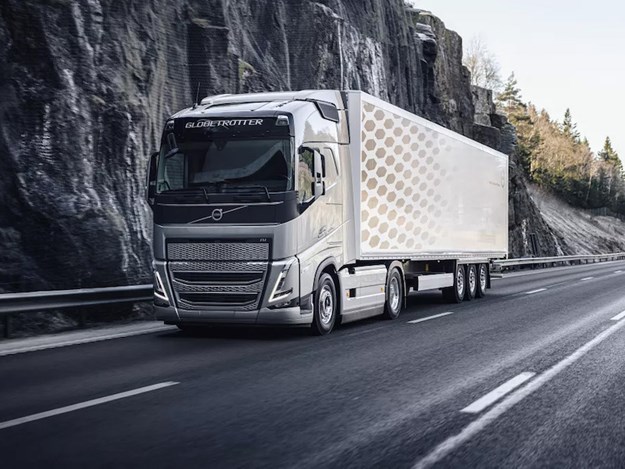Volvo explains how it made its FH truck more fuel efficient
Volvo recently updated its Volvo FH’s aerodynamic design to further reduce flow separation and pressure drag, which will save fuel in long haul operations and make trips more efficient for operators.
But how was it done?
 |
|
The Volvo FH is being upgraded to make it more fuel efficient
|
Volvo says overcoming air resistance is a significant contributor to a truck’s fuel consumption when driving at over 50 kilometres per hour, with the impact on fuel consumption increasing exponentially the faster the truck goes.
Volvo’s goal was to minimise and delay flow separation to make its FH truck more aerodynamic and therefore consume less fuel.
To solve the problem, Volvo’s engineers continuously worked with wind tunnels and simulations to delay flow separation, which is when a layer of air flow detaches from the truck’s surface and leaves a large wake behind the vehicle.
Volvo says that minimising and delaying this flow separation minimises pressure drag, as Volvo engineers identified several small gaps and split lines on the truck’s exterior that could improve aerodynamics further if sealed.
“We saw that split lines and gaps can be crucial depending on where they are situated,” Volvo Trucks engineering specialist Mattias Hejdesten says.
“They allow air flow to seep in behind the front panels, which then gets sucked out in the low-pressure regions on the cab’s sides.
RELATED ARTICLE: Volvo truck to be recalled
“From there, it can trigger flow separation when it interacts with the external air flow.”
When it came to improving the Volvo FH’s aerodynamics, engineers stemmed these leakage flows and placed new seals along front panels to eliminate any flow separation from the vehicle’s front corners.
By adding these seals, the overall aerodynamics improve and further chances for improvement are opened to include door extensions.
Other designs, including new curved designs for the mirror arm covers with smaller peak holes, also helps to reduce flow separation.
“By improving the conditions at the front of the truck, we can suddenly see some opportunities to maintain an aligned flow along the sides too,” Hejdesten says.
“Otherwise if we hadn’t done this we would’ve seen minimal benefits from these additional aerodynamic improvements.”

